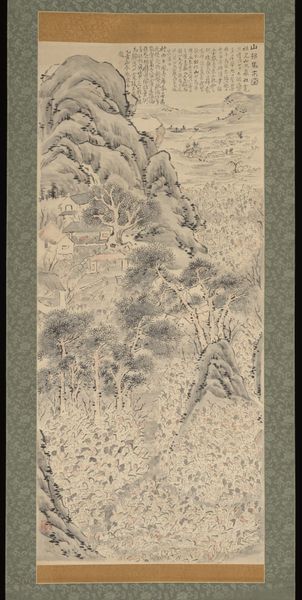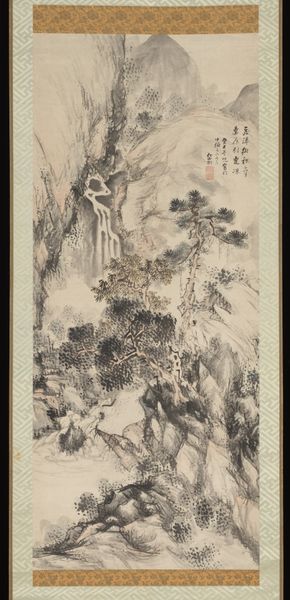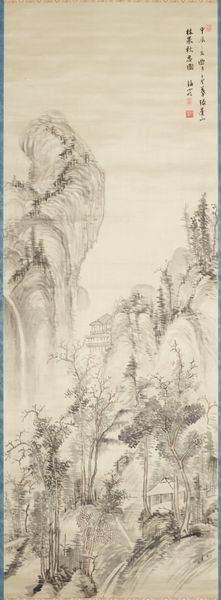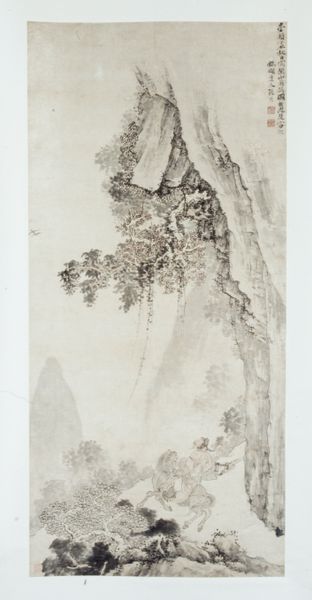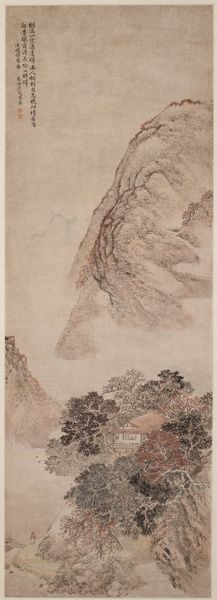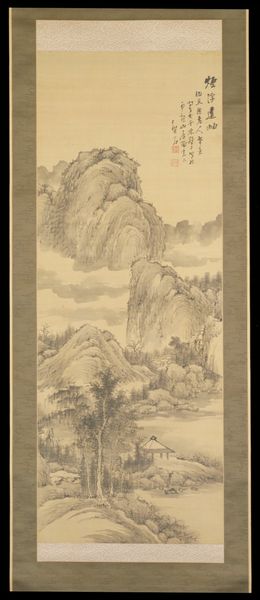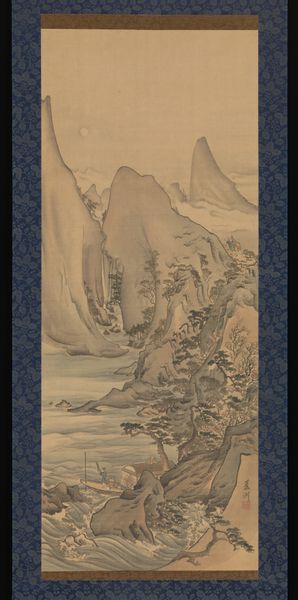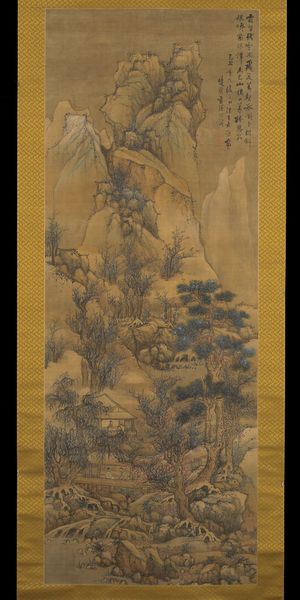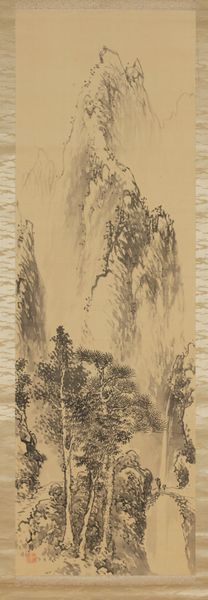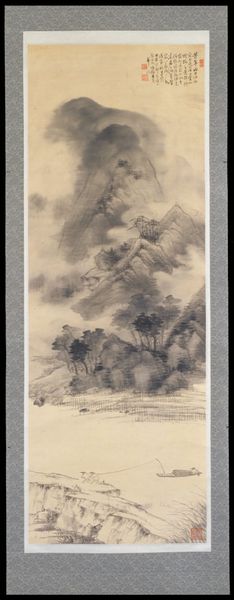
painting, hanging-scroll, ink
#
ink painting
#
painting
#
asian-art
#
landscape
#
form
#
hanging-scroll
#
ink
#
orientalism
#
line
#
academic-art
Dimensions: 53 1/2 x 23 1/8 in. (135.89 x 58.74 cm) (image)83 3/4 x 28 5/8 in. (212.73 x 72.71 cm) (without roller)
Copyright: Public Domain
Curator: Here we have Nakabayashi Chikkei's "Scholar in a Mountain Landscape," an ink painting on a hanging scroll, dating back to the 19th century. It’s currently held in the collection of the Minneapolis Institute of Art. Editor: The monochrome ink creates such a serene atmosphere. The towering mountains almost overwhelm the tiny figures and dwellings nestled at their base. The artist is certainly masterful in showing scale and form. Curator: Indeed, this work resonates with a longstanding tradition in Chinese and Japanese art. The image speaks to the literati ideal, emphasizing the harmony between humans and nature, as well as the reclusion and contemplation a scholar seeks. These landscapes are more than mere depictions of nature, they represent cultivated landscapes meant to represent ideals for an educated ruling class, not common life for anyone in the population. Editor: It’s interesting how Chikkei uses line to create texture, especially in the rocks and trees. The ink washes also contribute significantly, producing the illusion of mist and distance that envelops the entire scene. Curator: He was working at a time when Japanese art was undergoing significant shifts due to interactions with the West. Paintings such as this allowed artists to continue producing works that conformed with prior established aesthetics but subtly referenced or took ques from western perspective. This became especially visible in exported versions of these art pieces, such as hanging scrolls marketed toward wealthy American tourists who wanted Asian curios in their homes. Editor: It also looks as though Nakabayashi is carefully balancing abstraction and realism here. While the scene is undoubtedly representational, he prioritizes form and rhythmic patterns rather than precise, naturalistic details. Curator: Yes, it really draws attention to the politics around academic artistic tradition. This is an imagined, not found, scene which is presented as though these pieces are realistic snapshots into a cultural milieu of deep intellectual history that they never existed in. It perpetuates a cycle of exoticization of intellectuals in landscapes divorced from reality that continues today. Editor: The contrast between the solidity of the mountains and the softness of the mist is something that strikes me as quite moving. You get this feeling that the artist truly appreciates all forms of line that comprise this reality. Curator: The landscape reminds us that we see these kinds of images through lenses shaped by history and social convention. Its success also speaks volumes about how artistic style meets historical moments. Editor: Ultimately, Nakabayashi’s handling of the ink’s tonality generates an unforgettable visual encounter, urging us to meditate and appreciate the wonders of form and color contrast.
Comments
No comments
Be the first to comment and join the conversation on the ultimate creative platform.
